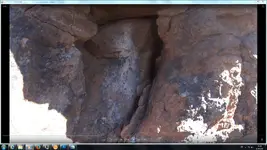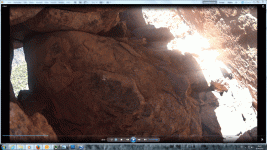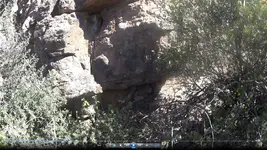Real-of-Tayopa , we all love your posts and inputs on T'net !
If your missions in Mexico were packed with star-studded treasure lore, then yours are a far cry from our missions up here.
As you know, the indians up here had no refined metals. That is: That unlike the indians of south America (eg.: the mexico city fabled gold the incoming Europeans gathered and gobbled up), it was not the same here. They did not gather or refine the gold that is in the hills here. So perhaps some of your missions/churches near the 'ground zero' of that gold history, is different than up here.
Any manufactured goods or refined metals had to come up north from the Mother country of Mexico. If we're talking about the Spanish frontier of Arizona, Texas, New Mexico (which, yes, had spanish outposts as early as the 1600s), then figure that ANYTHING coming up that far, had to come across the Chihuahua desert by land. Thus notice those old surviving churches (the few that remain to be seen) are rather modest poor simple concerns. Not at all "lavish". Perhaps the churches of ground zero earlier gold-era Mexico and gold bearing regions down there, had churches that were lavish (and you could try to justify a "treasure legend" story). But by the time they got this far north, no, they were not that well provisioned. And no, there was never enough historic gold mining on-site here to amount to anything more than some trinkets they could make. And in CA for instance, gold (of any significance) was not even discovered till AFTER the Spanish and Mexican era.
Any "gold" that could have come up to the American SW churches, would either have to come up by foot, or by ship to the west coast. And it was VERY difficult for ships to ply northward , up past Baja, up past San Diego, going north. Because the currents went COUNTER to that direction. It was easy to sail south back to Mexico, but very difficult to go north. So a lot of Spanish times ships that came past our section of the coast, were galleons returning from the Philippine manila trade . And they were said not to have stopped . Once they sighted the coast of CA (following the pacific currents) they immediately went south to Mexico. BUT EVEN IF IT COULD BE SAID THAT THEY STOPPED (and yes, a few did), they were laden with goods. Not gold and silver. So they'd be carrying porcelin, silk, wax, spices, etc.... Any gold and silver they'd brought, would have been to pay for the goods in the Philippines.
Thus no: Our west coast Spanish era missions, and I would venture to guess NM, AZ, TX, and baja CA are all going to be the same: Frontier outposts that were doing good to get trinkets and some silver coins.
I won't argue with the notion of those churches deeper in Mexico , as to whether or not THEY necessarily contain "treasure". Except to say that .... you've admitted before, that ... uh .... superstition is hard to put to rest. So I would be very skeptical of "caves of gold bars hidden by the jesuits" EVEN DOWN AT GROUND ZERO of gold bearing Mexico/spaniard era stuff. Simply because such stories tend to be a dime-a-dozen down there.




 does somebody hear anything untypical there over the past years?
does somebody hear anything untypical there over the past years?




